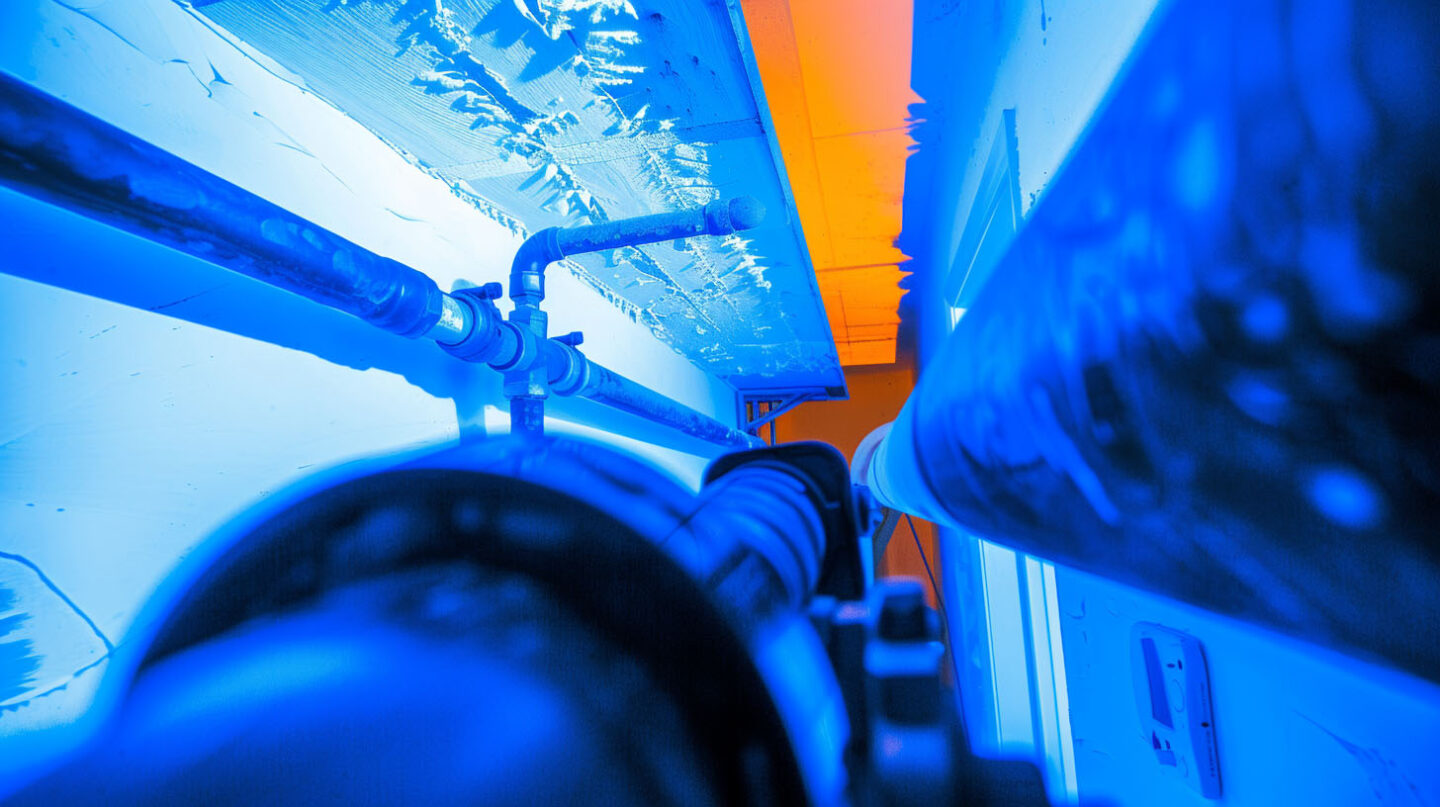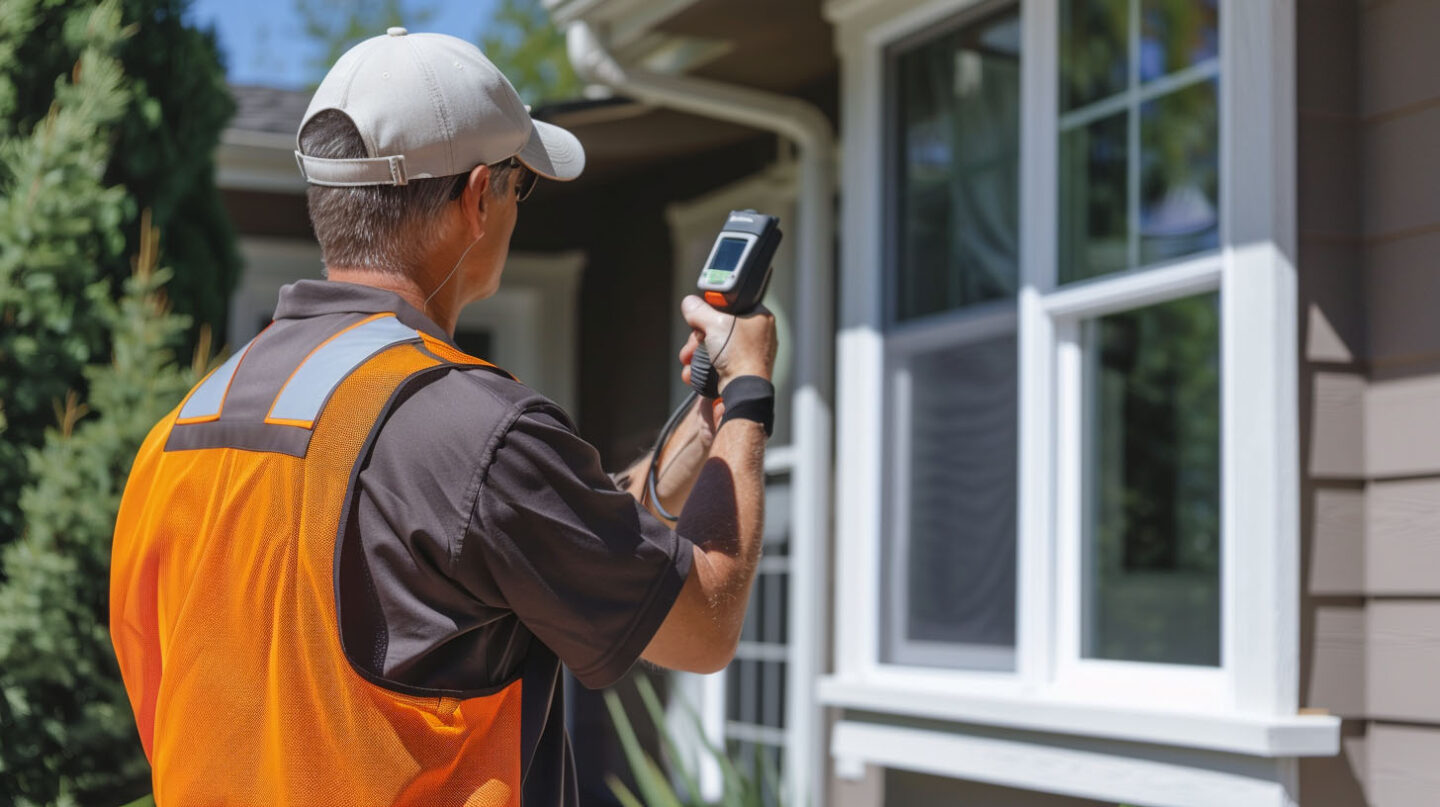Whether dealing with a persistent leak or assessing the overall condition of a property, The Shingle Master utilizes innovative methods like infrared moisture scanning to bring significant advantages. By employing infrared technology, our professionals can identify hidden moisture intrusion that may compromise a building’s integrity. With the ability to see beyond the naked eye, our thermal imaging cameras detect temperature differences that signal potential issues in Raleigh, NC. This often leads to quicker resolutions, preventing the escalation of problems, which can result in mold growth and costly structural damage down the line.
What Is Infrared Moisture Scanning?
Infrared moisture scanning is a non-invasive technique that utilizes thermal imaging to detect moisture hidden behind walls, ceilings, and floors. This advanced technology identifies temperature differences caused by presence, allowing professionals to pinpoint potential leaks without invasive inspection methods.
How Infrared Technology Detects Hidden Leaks
Infrared technology employs thermal imaging cameras to uncover hidden leaks by detecting temperature differences across surfaces. By analyzing thermal patterns, professionals identify areas of moisture intrusion that might be invisible to the naked eye. The infrared image highlights wet areas, indicating the presence of moisture where water may be compromising the structural integrity of the building envelope. This non-invasive method provides immediate insight into suspect areas, allowing for efficient detection of water damage and minimizing the risk of severe problems.

Common Areas Where Moisture Hides in Homes
Numerous areas within a home can conceal hidden damage, making them critical for property owners to monitor closely. Key locations include exterior walls, basement and attic spaces, and around window frames where water intrusion may occur, especially after heavy rain. Roof leaks often compromise the roofing membrane, leading to moisture accumulation in insulation. Understanding these suspect areas enhances the effectiveness of infrared imaging, enabling detection of thermal patterns that indicate moisture issues before they escalate into severe damage.
How Do Professionals Use Infrared Scans During Roof Inspections?
Professionals employ infrared scans during roof inspections to identify temperature variances, indicating moisture presence. This non-invasive method allows them to detect leaks within roofing materials efficiently, ensuring targeted repairs and minimizing potential damage without requiring extensive physical alterations or disruption to the structure.
Step-by-Step Process Used by Roofing Experts
Utilizing infrared technology, roofing experts follow a meticulous process to uncover hidden leaks. Initially, they assess the building envelope, evaluating temperature differences that indicate intrusion. Next, thermal imaging cameras capture infrared images, revealing thermal patterns around areas of concern, such as roof membranes and walls. These images help identify suspect areas and active problems without causing damage. Finally, a moisture meter confirms the presence of moisture, enabling professionals to pinpoint the source and recommend appropriate repairs, ensuring structural integrity.
Typical Signs of Water Damage Revealed by Infrared Imaging
Identifying water damage often requires a keen eye, as visible signs can be elusive. Infrared imaging is adept at revealing temperature differences indicative of moisture intrusion. Areas of concern may present as abnormal thermal patterns, suggesting wet insulation or moisture-laden structural components. The presence of moisture can lead to mold growth and significant damage if left unaddressed. Using an infrared camera allows professionals to pinpoint leak sources without intrusive methods, securing the building envelope’s structural integrity long before visible symptoms arise.

Benefits of Infrared Moisture Scans vs. Traditional Leak Detection
Faster Results and Non-Invasive Methods
Speed and precision characterize the benefits of infrared moisture scans over traditional methods. Utilizing thermal imaging cameras, professionals can swiftly identify temperature differences indicative of hidden moisture damage without disruption. This non-invasive approach allows for evaluation without dismantling walls or ceilings, preserving the structural integrity of the property. Detecting moisture intrusion in areas like roofing membranes or basement walls becomes efficient, enabling quick responses to potential leaks. In severe weather conditions, this technology provides a practical way to safeguard homes from subsequent significant damage.
More Accurate Targeting of Hard-to-Find Leaks
Identifying elusive leaks requires precise techniques, and infrared technology fits this need perfectly. By utilizing thermal imaging cameras, professionals can analyze temperature differences within wall systems and roofing membranes, revealing hidden damage that might otherwise go unnoticed. This method targets areas of concern, allowing for a more accurate assessment of water intrusion sources. Such accuracy not only prevents significant damage but also enhances the property owner’s confidence in addressing moisture issues promptly and effectively.
Your Next Steps
Utilizing infrared moisture scans provides property owners with innovative solutions for diagnosing hidden leaks effectively. By capitalizing on temperature differences, this advanced technology can reveal areas of concern that traditional methods might overlook. The non-invasive nature of infrared thermography not only preserves the structural integrity of buildings but also helps prevent significant damage from moisture intrusion. As severe weather conditions become more frequent, adopting such proactive measures ensures better maintenance and protection of homes from potential problems. Our awards include GAF Master Elite Contractor, BBB A+, Haag Certified Inspector, NC Licensed General Contractor, and Raleigh’s Best Roofing Contractor.

Frequently Asked Questions
Can an infrared camera detect water leaks?
Yes, an infrared camera can effectively detect water leaks by identifying temperature variations caused by moisture accumulation. This non-invasive method allows professionals to locate hidden leaks behind walls, under floors, and in ceilings with greater accuracy than traditional leak detection methods.
How to detect a hidden water leak?
To detect a hidden water leak, professionals utilize infrared moisture scanning to identify temperature differences caused by moisture. This technology reveals leaks behind walls, ceilings, and floors without invasive measures, making it highly effective for locating hard-to-find water damage in residential properties.
What are the disadvantages of infrared cameras?
While infrared cameras are powerful tools for detecting moisture, they have some disadvantages. High costs, the need for operator training, and potential inaccuracies in certain conditions can limit their effectiveness. Additionally, they may not identify all types of leaks or moisture sources effectively.
Read our blog: License, Insurance & Permits Checklist Before You Sign


